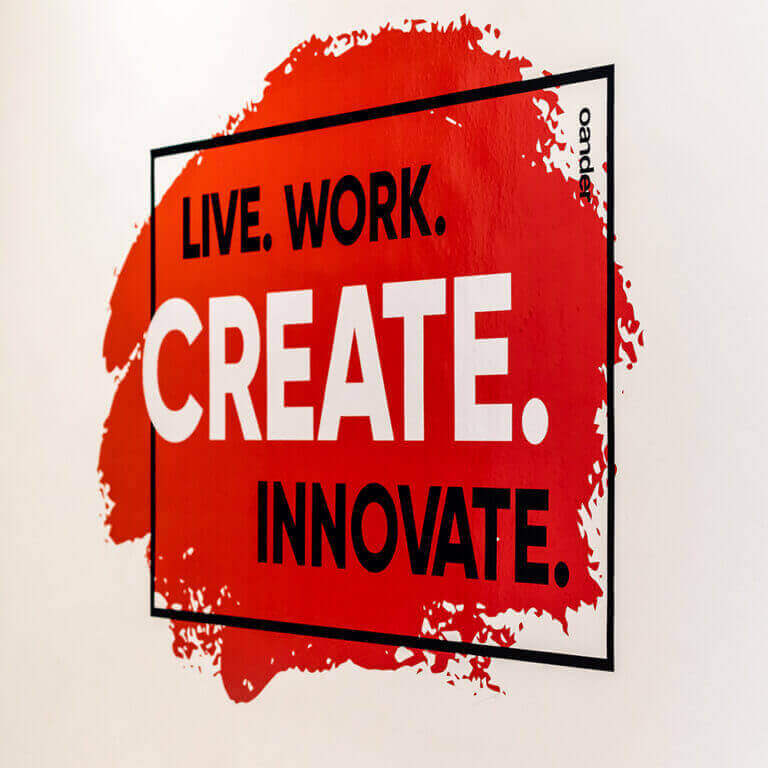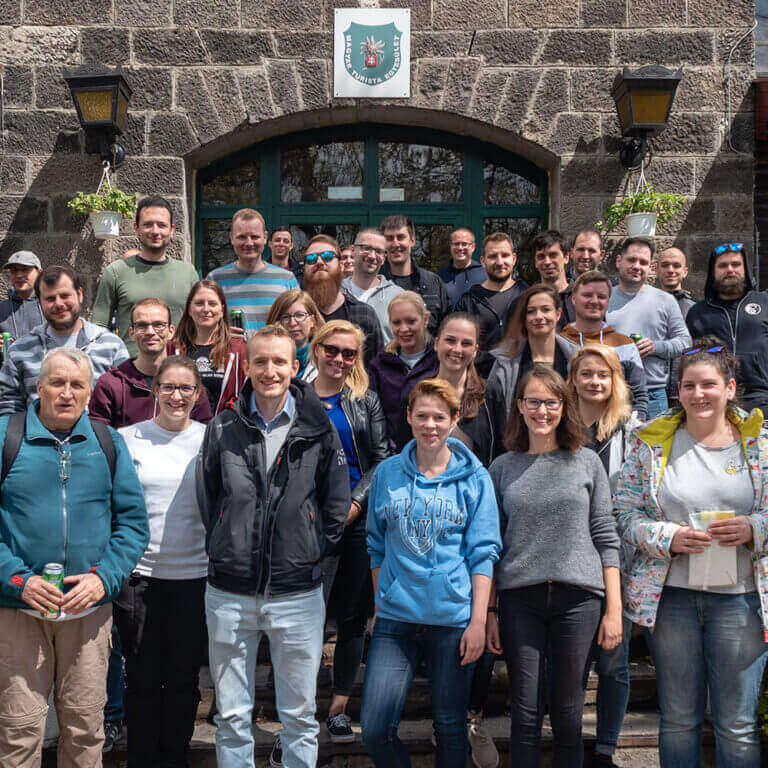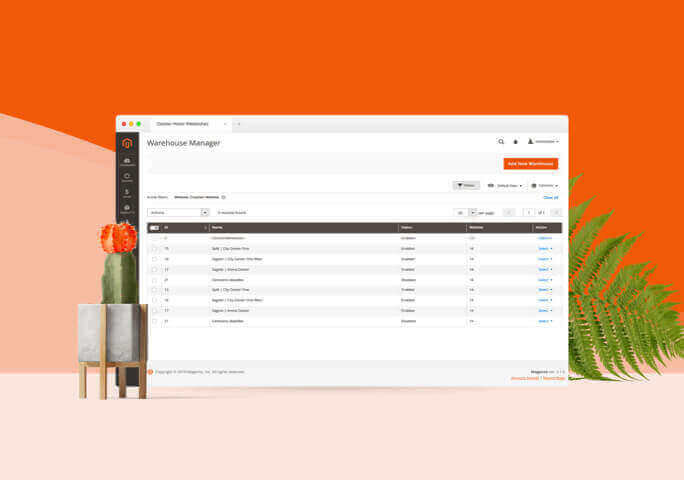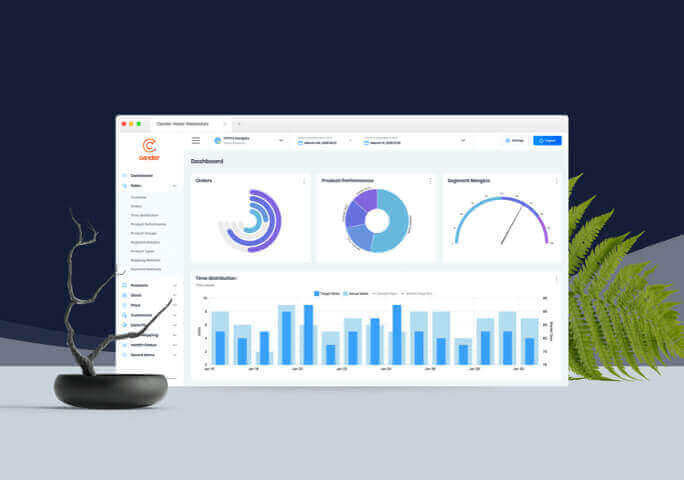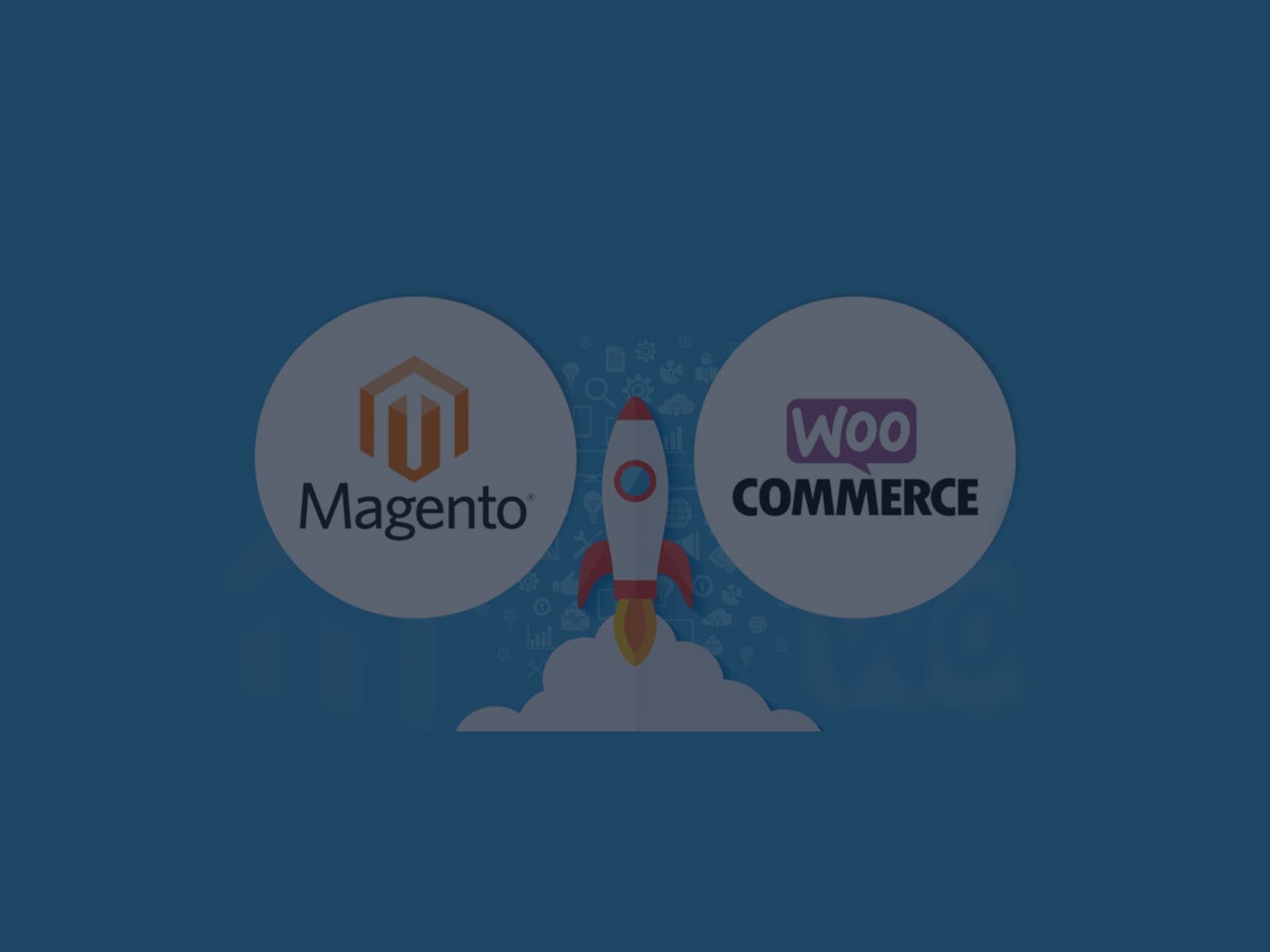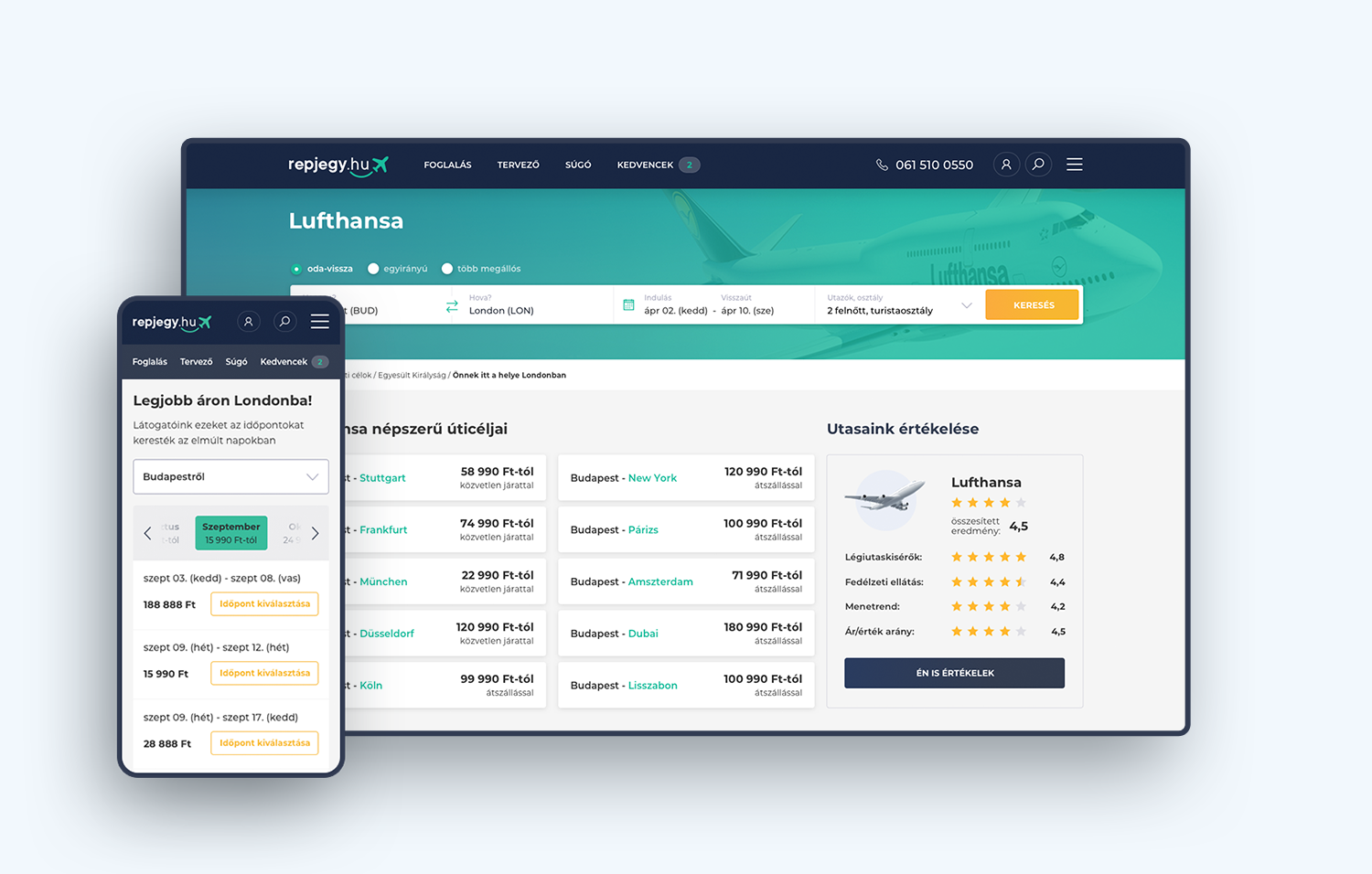We mainly work with Magento developments, so full disclosure: we can’t be entirely impartial upon writing this one. We will give it a go anyways, and let the clients decide for themselves.
As a preamble, let us emphasize that the aim of this article is not necessarily deciding on which platform is BETTER, and we don’t want to fire up any ongoing debates either. We simply think that making a conscious choice about a technological solution is always a matter of its future usage, the possibilities of its further development opportunities, and the investment/return rate with which it will operate with.
On the other hand, we aim to shed light on the advantages and disadvantages of both tools, in order to help to make the choice between these technologies easier. We’re not aiming to judge the values of one platform or the other. We, as a matter of fact, work with both at OANDER. We develop products both on Magento and on WordPress platforms, we just use (and suggest them) for different purposes.
’Knife or fork – which tool is better? Pretty meaningless question right? Because the answer depends on your context. For eating meatballs the fork is probably best. For chopping mushrooms the knife is probably best. For drumming on the table either will do fine. For eating a stake you probably want to use both tools together. For eating rice… well… some prefer a fork while others prefer chopsticks. So when we compare tools we should be careful. Compare for understanding, not for judgment.’
An excerpt from the book Kanban and Scrum – Making The Most of Both by Henrik Kniberg and Mattias Skarin.
What are the similarities?
To better understand how Magento and WordPress to work (so that we can make a comparison), let’s have a look at some of the similarities they share, that contributed to their popularity.
- An important competitive advantage of both platforms is that they have an open-source: the base template can be developed further and what’s more important they are independent of the developer/supplier. The client is not bound by exclusivity with the given developer company and its attributed know-how or license rights. If the contractual arrangements are set properly at the beginning, clients can take their projects to other companies and
developers. - Both software offers a free base version. To be precise, WordPress only offers a free version, while Magento has an Open Source Edition, which is also accessible to everyone. In other words, both technologies have a free, available set of base functionalities – as a client, you ‘only’ pay for the design, the unique developments, the frontend, the launch, the content support, and in some cases for system integration.
- Magento and WordPress are both PHP-based software, which is one of the most common scripting languages in the world. Developments carried out on these engines are based on widespread industry know-how and experience. When choosing either, the client is not going for a closed or a restricted solution that might be exclusive to a given developer community.
- Both have third party modules and extension-like functionalities available. This means, that the base software can either be developed further independently, or tools that have already been developed by others can be added from the Marketplace and these can just be installed to new sites. If clients require something that the base functionalities cover, chances are, that someone else has already come up with a solution and a product. With Magento, these are called extensions, while WordPress goes with plugins instead. (WordPress’ webshop functionality, WooCommerce is essentially a plugin itself).
- The two platforms both allow the creation and the development of truly unique customer experiences. With the appropriate amount of research, UX and UI designing a newly developed webshop can have a completely unique design: the brand identity and the corporate design aesthetics can be fully reflected in the visual appearance. This is due to a common feature of the two engines: the fronted appearance, that’s visible to the user (template layer) and the engine (back end) are pretty much independent. They don’t put technological restraint on each other: a complete change of design for example doesn’t mean having to say goodbye to the site engine itself as well.
What are the main differences?
From an e-commerce perspective the main difference between the two engines lies in their original purposes. To be more precise, in their history of how they became webshop engines:
- WordPress is primarily a content management system (CMS). Originally it is a blog engine, but it has come a long way since. We often use it for media outlets and for the development of corporate sites as their solution offers a complex set of functionalities. For its main profile though, WordPress focuses on content management still – this is the comfort zone and the main pillar of their architecture. WooCommerce is essentially a plugin, an additional set of functionalities for WordPress, offering webshop features that allow for the boundaries of content management to be extended.
- Magento is a webshop engine, or in other words a targeted e-commerce software if you like. Originally it has been developed for online trading – each of its components aims to support online shopping and its attributed user processes, such as logistics and integration. It has never been a content management system and despite having some CMS functionalities, these have never been at the forefront. It would be hardly realistic to develop a news site or media outlet on a Magento engine for example. The strength of Magento lies in the fact that if you need a webshop, then it offers a set of functionalities that were specifically designed for such purposes.

Who do we don’t suggest Magento to?
It’s not a secret, that here at OANDER we prioritize Magento-based developments when we are working on e-commerce developments. The reason for this though is not that we don’t think that WordPress is not a good option, we (as a team of developers and designers) just simply prefer projects of bigger complexities and more challenging developments. This is what’s giving us life and the platform for these is Magento.
Its functionalities are mainly tailored to the needs of mid to large size enterprises.
Magento is a multi-layered and very robust e-commerce software, but it’s not everyone’s cup of tea. Its development, management, and upkeep require great expertise and experience. It’s not a task for one or two people only: it requires a whole team and it also calls for the involvement of numerous experts – it’s management thus is more costly. A Magento-based project development usually means an investment of several thousands of euros. Ecommerce enterprises that are just about to launch their businesses or micro-enterprises might be overpowered by such an investment. As a matter of fact, it might not be relevant for them just yet to commit to such decisions. You can find out more about the reasons why Magento developments are more expensive compared to developments carried out on different platforms if you read our article here.
If the ‘webshop to be’ only serves the mere purpose of testing the waters rather than targeting an established segment within an e-commerce market, then the use of Magento might be unreasonable, to begin with.
In general, for new clients who are just about to enter the e-commerce market and are seeking for rapid yet cost-effective solutions, who are launching simpler webshops with a smaller product offering and with a foreseeably lower selling intensity, we’d recommend the option of a ready-made or a rentable webshop solution. Compared to rentable webshop options, purchasing WordPress-based WooCommerce products are more expensive, as they offer unique appearance possibilities. These prices would still fall behind compared to the costs of Magento developments though.
As a rule of thumb, we would say that if the online traffic of the webshop is estimated between 170-200,000 EUR a year, choosing Magento would be recommended. We can’t say the same for any websites that have a total e-commerce traffic estimate below a 255-85,000 EUR benchmark. This ‘rule’ of course is subject to margins and expansion plans.
In case someone needs a webshop ‘by yesterday’, Magento is not a realistic option. The reason for this is the complexity of the system itself. It takes several weeks just to roughly estimate which of Magento functionalities will a client need and how will they utilise these. In the case of larger-scale projects, the development of unique functions is also more elaborate, thus more time-consuming. Due to the complexity of the functionalities, it should be kept in mind that understanding these, learning how to use them, and launching the whole system on a company level takes a lot more time, than starting to use a WooCommerce webshop.
Usually, a more advanced and unique Magento development starts with an estimated 4-month-long lead time, to begin with.
Only choose Magento if you can allocate months for precise planning, preparing, and designing of your webshop. If the scope of a project also includes large-scale system integration and the need for multiple unique developments, the lead times will be further extended. If these timeframes are not feasible for your business, then Magento is probably not for you.
What about micro-businesses?
If the estimated e-commerce traffic remains below a few thousands of euros neither WordPress nor Magento is recommended. Both options would require a financial investment of such an irrational scale, that would exceed the whole profit of the business itself – WooCommerce still might appear to be a more cost-efficient option, but it’s still not entirely free. WooCoomerce projects still require design planning, frontend development, parameterizing: in other words, additional development works. SaaS e-commerce solutions such as Shopify seem to be viable options though. Webshops can be launched with them at low costs. The design might not be as unique, but these tools would help businesses to enter the market quicker. Once these businesses grow big enough, it might worth making a larger investment into the development of more unique solutions.
When to launch a Magento development?
In a few words: only if your business has already been established as an e-commerce competitor or if you are entirely sure that it will become one within the foreseeable future (meaning that your building your brand and backing it with a marketing and development budget). Talking about budget, if an investment of around ten thousand euros doesn’t take away the bigger half of your online profit and you see future potential for your business than technically you fall under Magento’s target audience.
We usually recommend Magento being a base of development for e-commerce projects, that focus on – and want to fully utilize – its functionalities, that prioritize scalability and that include plans for the possibilities of system integration. Magento’s target audience includes traders who are either skilled and experienced in the world of e-commerce already or who have expansion plans that go beyond a pilot project, and need an intelligent webshop system: a specific, goal-oriented software solution.
Another important key consideration is the lead time of the project. As they say, a webshop is never fully complete, there are always things that need optimization and clients will always have new ideas that they will want to bring to fruition. The volume of these aspects is very important though. In the case of the WordPress-based WooCommerce for example, the expansion of functionalities is restricted, as this plugin is already very remote from its base software. So, if you can already tell that the coming years will bring intensive development needs then it’s worth launching with a software that doesn’t place limitations on your plans. Magento is more accommodating, for these needs.
The accurate and automated synchronization of business data between a webshop and a CRM or ERP system is crucial in e-commerce. There are several areas that this process covers, including but not limited to synchronization of product and stock information, customer data management, customer transfers between platforms, product movement, handling of commercial information, or system integration with payment providers. These are all tasks that require development. Ask yourself ‘how many of these would we need and to what extent’? If the answer involves multiple such integrational aspects and if there is heavy data flow, the scale will be tipping towards Magento as a choice.
Magento is currently available in two different constructions: it’s Open Source edition can be utilized free of charge, while Magento Commerce requires the payment of an annual license fee. Whereas the first one pretty much covers the most common needs of webshops in general, the second one is more of a suitable alternative for bigger corporations as it includes the direct support of the manufacturer and several advanced features, like B2B solutions.
In what ways is Magento more complex?
Now that we cleared the air around choice-making, and how it depends on the context and the possibilities of the project, let’s discuss what we mean by saying that Magento is more of a corporate system compared to WooCommerce.
- The number of products: identifying the number of products we will have in our webshop is key. An offering of thousands and thousands of different products is not an issue at all for Magento, whereas WooCommerce would already be stretched to its limits with a lot less. It’s worth investing in a system that allows for product expansion opportunities in the long run, so estimating the volume of your offering is of the essence. With appropriate cache processes in place and core optimization, WP can support bigger product listings, but this would compromise the native safety and smooth operation of WordPress.
- Scalability: Magento incorporates numerous architectural attributes, that serve stability and performance. Its object-oriented development is one of these (WordPress on the other hand was developed with a more outdated, procedural programming). Magento also has a multi-DB ability, meaning that during a heavy overload any module or functionality can be outsourced to other server resources, which means that the level of scalability is very high. WordPress doesn’t have any of these features.
- Database architecture: in WordPress, all types of content – including products as well – are essentially posts or slightly altered versions of these. The content is stored in a shared database, which is not optimal for frequent data extraction. In Magento, the features mentioned in the previous point are completed with an EAV database solution. With this you can export attribute and algorithm-based data a lot quicker and more efficiently. In Magento the chances of us developing projects, that would later be compromised by database management issues are thus a lot smaller.
- Critical system integrations: Magento’s data syncing solutions are built on industry standards and they offer great integrational opportunities. Besides syncing product and stock information, managing customer data and the dual transfers of purchases, moving stock, handling business information, or linking up with payment solutions, a wide range of other integrations – that can support business workflows – can be carried out in the system. The system’s native API features have been specifically designed with these purposes in mind. We can’t really say the same about WordPress though as its integral API processes are only capable of managing single stream integration processes.
- Commercial functions: whether we’re talking about pricing mechanisms, promotional tools, user management, product maintenance, or built-in integrational solutions, there’s hardly any real comparison between Magento’s inbuilt e-commerce functions and those of WooCommerce. If you wish to finetune business processes or target a deeper segment by means of promotional tools, you’ve already gone beyond the capabilities of WooCommerce.
- Unique developments: if there is a potential need for the development of unique features or if you would like to have an option to make changes that might exceed the limits of a base software’s capacity then with WooCommerce, you are very likely to hit a few walls along the way. With WordPress, modifications always have to be made on a core level which is not only risky, but it also cancels out the possibilities of the installation of future updates. Just to show a counter-example, the whole modular build-up of Magento was designed exactly to allow for such updates to be made effortlessly. Let’s say you want to switch off the basket function on your site: in Magento, the only thing you have to do is to block the module that the basket function is running on, but the webshop itself will still run smoothly as ever. Should it come to the same in WooCommerce, you would have to take a deep, deep dive to achieve the same. It’s quite easy to see how the system-level amends is a whole lot more problems with this platform.

In summary
Is Magento a more advanced, more bearing, safer, and more scalable e-commerce software? No doubt. Is it a better option then? No, not necessarily. The choice depends on the status of your project and the expectations of the complexity of required functionalities. For many small businesses the launch of a Magento project could be quite a burden both from a financial and human resource perspective.
Weigh your options, have a chat with experts if you can, try and test different frameworks, and choose a software that is appropriate for your budget and that doesn’t limit your future expansion.
Let the adventure begin…
